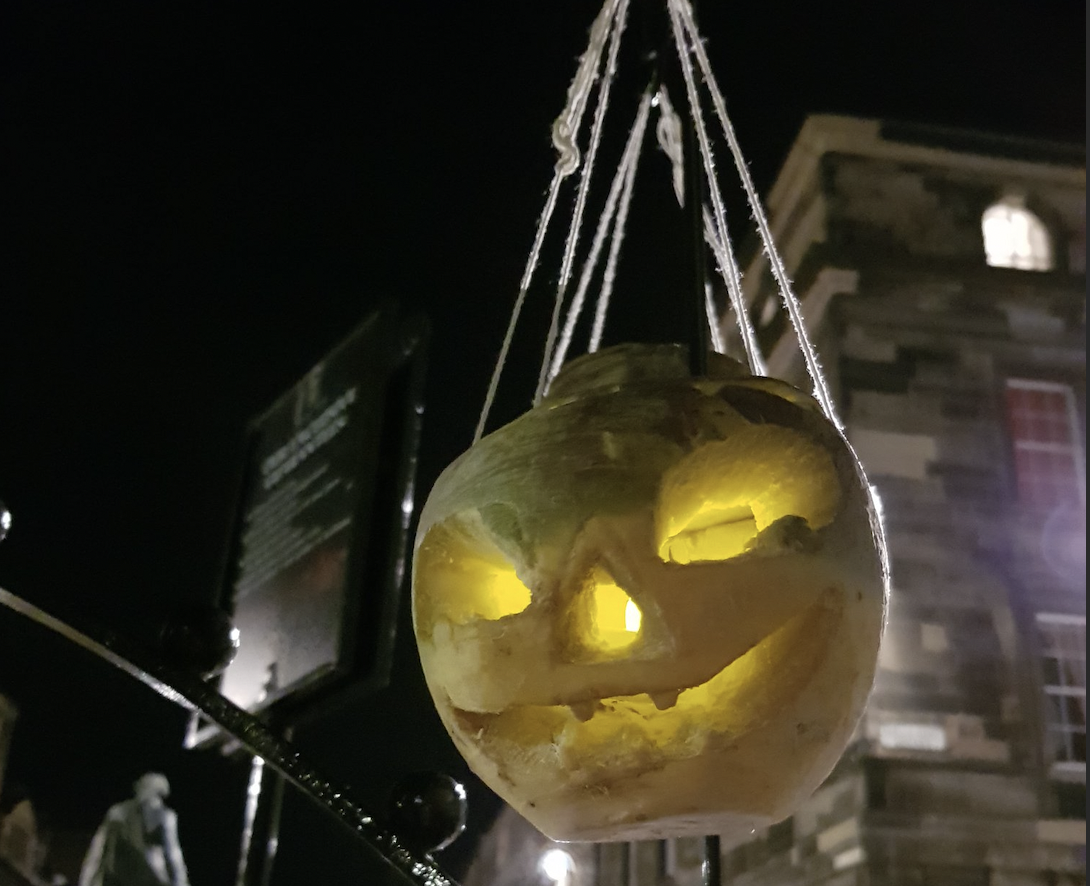Who Was Jack O Lantern
30th Oct 2021
By Stefanie Turpe, Mercat Storyteller
T’is the season to be spooky, and scary pumpkin faces are popping up everywhere. Halloween imagery wouldn’t be the same without Jack O’Lanterns. But who in the devil’s name is Jack and where did he get all those pumpkins…? Well, a hodgepodge of folklore spanning hundreds of years and two continents, that’s where!
Let’s start with the name. In the past “Jack” was what people would call a generic man whose name they didn’t know. So “Jack of the lantern” just means “lantern guy”, if you will.
With such a mysterious character, it’s no wonder that someone came up with an origin story for him. Legend has it that Jack was a farmer in the non-descript olden days. He was a nasty, miserly fellow, a liar and a cheat. His antics eventually earned him a visit from the chief trickster himself, the devil. The two of them hit it off and went for a drink – go figure! When the time came to pay, Jack challenged the devil to show off his shapeshifting skills and turn himself into a coin, which Jack promptly used to pay for the beer.
The two had several more run-ins where they tried to out-trick each other. When Jack’s life eventually came to an end and his soul tried to gain entry to heaven, he was understandably turned away. However, when he knocked on the fiery gates of hell instead, his old friend the devil did not want him either – he was a liability, after all! At least he gave him a glowing ember from the fires of hell, which Jack put into a hollow turnip. To this day Jack’s soul wanders aimlessly between the worlds, with nothing but his lantern to light his way.
The tradition of carving vegetables into lanterns is older than this story though. It might go back to pre-Christian times, but of course we can’t go back to 6th century Scotland and ask. It’s widely accepted that our modern idea of Halloween originated from the Celtic feast of Samhuin, the end of summer, when the harvest had been brought in, the life stock had been slaughtered, and people were preparing for the dark half of the year.
As nature was “dying”, it was also a time to commemorate those who had passed. People probably believed that the spirits of their ancestors, along with the fae folk and various otherworldly troublemakers roamed the world of the living during those cold, misty, liminal times. To keep them away from your house, why not hollow out a turnip, give it an ugly face, and put a glowing coal inside? That way any wandering spook will assume that your house is already sufficiently haunted and move on. Common sense, right?
When Christianity spread, it was easier to give all those ancient customs a Christian spin rather than try and eradicate them, so Samhuin, the feast of the dead, became All Hallows’ and All Souls’ Day on 1st and 2nd November, with the evening before being All Hallows’ Eve – Hallowe’en.
Finally, how did we go from turnips to pumpkins? When Scottish and Irish people emigrated to America, they took their traditions with them. In the New World they came across a vegetable that was much easier to carve and arguably prettier than their trusty old neeps – and that’s how the pumpkin conquered Halloween.
If you’re the crafty type, why not go old school this year and carve a tumshie? In any case, happy Samhuin, and don’t forget to keep the lights on! Plus, you can always join us on our special Halloween Tours running from October 29th for more intriguing stories like this one.

